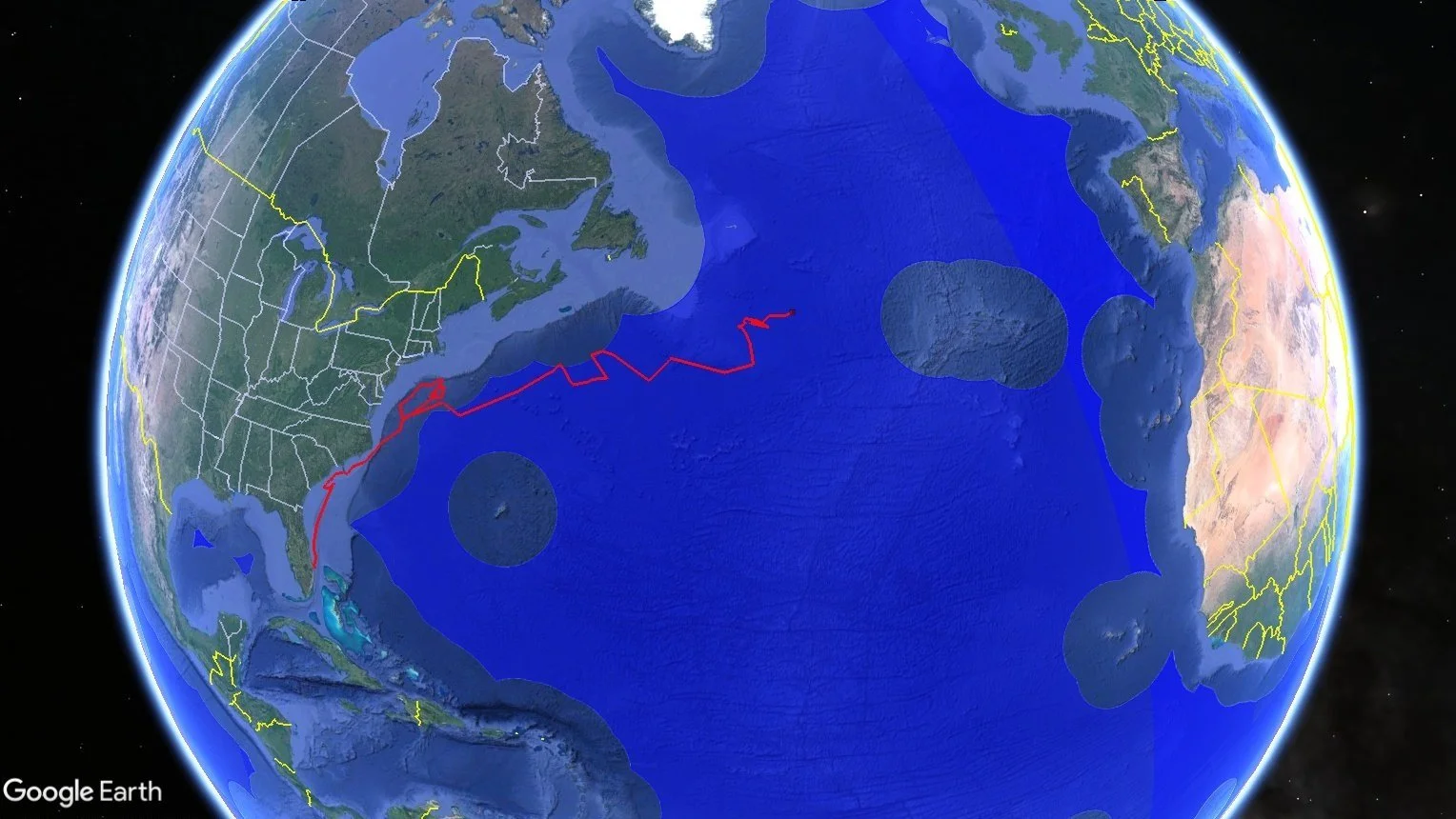For many people, the idea of ‘the high seas' is akin to another planet. One can read about it, see photos and videos, and imagine the possibilities of megalodons and undersea kingdoms hidden in the depths. However, ”the high seas'' is actually a term from maritime law, referring to the parts of the ocean that are not owned or governed by any nation. About ⅔ of the world's oceans can be considered high seas. Since everyone and no one has jurisdiction over the high seas, its management and protection has been uncoordinated and ineffective with many gaps, which have left the marine species that live there vulnerable to human-created threats including fisheries bycatch and shipping traffic among many others.
Most sea turtle species spend large portions of their life history in areas considered high seas, with leatherbacks standing out as the greatest world travelers. In the 2018 article “The political biogeography of migratory marine predators” by Autumn-Lynn Harrison et al., leatherbacks in the Pacific Ocean crossed through the Exclusive Economic Zones (EEZ’s) of 32 countries and the high seas. The East Pacific population specifically spent 78.2% of their time on the high seas. Figure 1 from Harrison’s article below shows the daily locations of marine predators electronically tracked in the Pacific Ocean with EEZs shaded in white (all other areas are high seas). The East and West Pacific leatherback populations can be seen in green.
Booker and Warrior, two male leatherbacks Upwell and NOAA tagged off the coast of California in 2022 set a new record for fastest crossing on the high seas. In the map below on the left, you can see in their satellite tracks that they crossed the entire Pacific Ocean (through high seas and multiple EEZs) to arrive adjacent to nesting areas in the Solomon Islands and at Bougainville Island. These trans-Pacific migrations typically take 7-10 months, but Warrior swam from the Gulf of the Farallones to Choiseul Island (Solomon Islands) in 166 days (about 5.5 months), which is the quickest migration by any leatherback tagged off California since NOAA began monitoring in 2000! In the figure below (from Harrison et al., 2018), you can see the probability of leatherback occurrence in EEZs and the high seas during the 7–9 months following tag deployment in the California Current.
Leatherbacks aren’t the only turtles voyaging across the high seas. Juvenile loggerhead turtles departing from nesting beaches in Florida are known to cross the Atlantic and head to the Azores Archipelago. In 2022, Upwell partnered with the Georgia Sea Turtle Center and the Gumbo Limbo Nature Center to tag and release Ember, a juvenile loggerhead sea turtle. As you can see in the map below, the second part of Ember’s satellite tracks are almost entirely through the high seas, shaded in royal blue.
Sea turtles like Warrior, Booker and Ember have little idea that they are swimming through “EEZs” or “high seas'' or how the legal frameworks governing these areas result in varying levels of protection from human-created threats. While swimways are being established as a way to provide migratory species safe passage between Marine Protected Areas (MPAs) established within EEZs, protecting the vast expanses of the high seas requires worldwide international collaboration.
In June of 2023, after almost two decades of negotiations, UN member states adopted a legally binding marine biodiversity agreement with the objective of providing a coherent and holistic framework for protecting the high seas: the Biodiversity in Areas Beyond National Jurisdiction (BBNJ) treaty (also referred to as the UN High Seas Treaty). However, much work remains before the treaty can be implemented (including its ratification by at least 60 nations), which is why the High Seas Treaty Symposium was held in Edinburgh, Scotland earlier this month. Participants gathered to critically evaluate the potential challenges and opportunities for the implementation of the BBNJ Agreement.
Upwell Executive Director Dr. George Shillinger attended the symposium to participate in discussions and conversations with participants regarding how the implementation of the BBNJ treaty may positively impact efforts to monitor and protect marine turtles within areas beyond national jurisdiction (ABNJ). He learned about some of the key elements and objectives proposed within the Treaty, including the potential establishment of MPA’s on the high seas, and the need to develop novel adaptive and dynamic management strategies for other areas between and around these regions. Other discussion topics focused on environmental accountability (the need for Environmental Impact Assessments) and the development of mechanisms to provide funding to the marine scientific and technological capacity of States, and to facilitate equitable transfer of marine technology in accordance with the Treaty’s objectives.
The effective management of leatherbacks and other highly migratory species will require tremendous intergovernmental collaboration and political will to find and leverage shared resources to improve vigilance, governance, and protections within areas beyond international jurisdiction. Dr. Shillinger noted that Upwell is “committed to advancing these objectives through the collection and analysis of sea turtle monitoring and demographic datasets, and through the development of tools and approaches that can be appropriately applied across the vast spectrum of stakeholders who play a role (actively or tacitly) in ensuring the long-term survival and persistence of sea turtles and other threatened highly migratory species.”
Want to learn more about the high seas? Check out this episode of Blue Planet about the high seas, have a look at the High Seas Alliance Treaty factsheet, or read Autumn Lynn-Harrisons article “The political biogeography of migratory marine predators.”
Sources:
Gu, J. (2023, March 30). The High Seas Treaty, explained. Reuters. https://www.reuters.com/graphics/GLOBAL-ENVIRONMENT/OCEANS/jnvwyjomdvw/
Harrison, AL., Costa, D.P., Winship, A.J. et al. The political biogeography of migratory marine predators. Nat Ecol Evol 2, 1571–1578 (2018). https://doi.org/10.1038/s41559-018-0646-8
High Seas map data from the Flanders Marine Institute (2020). Maritime Boundaries Geodatabase: High Seas, version 1. Available online at https://www.marineregions.org/. https://doi.org/10.14284/418







